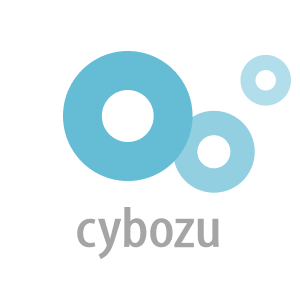Updated February 27, 2025
Angel investing in Japan [2025 guide]
Angel investors are one of the building blocks of any thriving startup ecosystem.
Indeed, some of the most well-known and successful startups, like Uber, Airbnb, and SpaceX, as we know them today, wouldn’t be here if it weren’t for angel investors.
These high-net-worth individuals provide seed capital to many startup companies and help them get their feet off the ground even before the company shows any sign of tangible success. As is the case in many countries, angel investors have played a significant role in providing much-needed capital and support to startups in Japan in recent years.
However, in the past, taxation rules regarding the investments made by angel investors haven’t exactly been a motivating factor for these individuals. Considering that they’re already taking a significant risk by investing in companies that are in their crawling stages, incentivizing angels to invest in startups hasn’t exactly been the easiest task.
As angel investors are an integral part of any thriving startup ecosystem, it’s been clear that in order for a startup environment to grow strong, the complex taxation system for investors that was in place in Japan for a long time needed to change.
Luckily, the Japanese government has been taking the necessary steps to ensure that this is no longer the case and that the taxation system in Japan won’t scare away angel investors.
In this post, I’ll talk about how the angel tax system in Japan works, a.k.a Japan’s Angel Zeisei (Angel Tax System), explain the government’s efforts to incentivize angel investors, as well as the benefits of being an angel investor in Japan.
Let’s get right to it.
Japan’s Angel Tax System: A Brief Overview
As I mentioned, Japan has implemented a series of regulations to ensure that being an angel investor and investing in startups isn’t just less costly but also beneficial to the investors. The culmination of these regulations is referred to as the Angel Tax System, or Angel Zeisei, which quite literally translates to “Angel Tax System.”
This system was established through mainly two acts, which are the Act on Special Measures Concerning Taxation and the Act of Strengthening the Management of Small and Medium-sized Enterprises.
Essentially, there are two types of incentives investors can receive for two distinct types of companies that are eligible for the Angel Tax System, which I’ll mainly refer to as “Angel Zeisei” throughout this article. These incentives are called Incentive A and Incentive B.
The first one, Incentive A, refers to the tax incentive given to investors that invest in startup companies that are less than five years old. The basis for incentive A is laid out in Article 41 of the Act on Special Measures Concerning Tax, which states that special provisions for taxation are to be applied when acquiring shares issued by specified new small and mid-sized companies.
On the other hand, the second type of incentive provided to investors in Japan is referred to as Incentive B and applies to investments in companies that are less than ten years old. Incentive B is also established in the same act as Incentive B, in Article 37.
While the 5-year and 10-year requirements are the main specifications that set these two incentives apart, it should be noted that there are a number of secondary requirements for eligibility for each incentive. I’ll talk about these below extensively, but first, let’s take a look at the benefits of being an angel investor in Japan.
Benefits of Being an Angel Investor: No More Taxes?
While being an angel investor may be considered a “risky business” — which the Angel Zeisei system also has a remedy for — one of the main benefits of being an angel investor is, without a doubt, paying lower taxes.
Whether you’re an individual investor or an investment company, being an angel investor means that you can save on taxes while investing. The Angel Zeisei system in Japan allows investors to receive a considerable tax deduction based on the amount invested.
This means that as an investor, you’ll get to pay lower taxes on your income and gains from the sale of your properties in the year that you invest.
More specifically, as an angel investor, you’ll be able to offset up to 40% of your gross taxable income up to 8 million yen annually when you invest in unlisted companies that are eligible for the Angel Zeisei (as of April 2023).
Additional Benefits: Recovering Losses, Making Big Returns
While the premise of lower taxes is appealing, it’s not the only perk of being an angel investor in Japan.
As an angel investor, not only will you get a tax reduction when there’s profit, but if you end up with a loss from the sale of your investment, you can still recover your losses. Potentially, if a loss occurs, it can still be offset by the gain made on the transfer of shares made in the same year.
In addition, if this isn’t enough to cover everything, you can also offset your losses against the gains made from the transferring of shares over a period of three years starting from the following year you’ve incurred a loss.
Lastly, another benefit of investing as an angel investor is, of course, the potential for high returns from your investments, no matter how small the amount.
As startup companies show great promise in terms of rapid growth and success, this means that you’ll also be able to make big returns from your investment in addition to your tax reduction privileges.
In a nutshell, Japan’s Angel Zeisei system is designed to encourage investors and compensate for the risk of investing in unlisted companies by allowing investors to receive tax benefits both at the time of investment and at the time of sale. In addition, the potential of making a big return on the investment is the figurative cherry on top.
Beneficial for Companies As Well
While the Angel Zeisei is definitely beneficial to investors, the system also has a variety of benefits for the companies that receive the investments.
First of all, the angel tax system allows the screening of both the investing parties as well as the receiving companies. This creates a sense of security between the parties and makes for an overall more trustworthy system.
Secondly, even if a startup’s product/service or idea is golden, a startup company is only as good as the investment it receives. Without investment, companies have to apply for loans in order to come up with the capital amount needed.
The beauty of the Angel Zeisei is that startup companies are able to receive funding even when it’s difficult to receive loans from financial institutions or there’re no loans to be received at all. A company that receives an angel investment can easily grow successful without ever needing a loan from a bank or other financial institutions.
Of course, as it’s in both startups’ and investors’ best interest to grow and develop a better startup scene, any positive change regarding the taxation of investments will end up being beneficial to both startups and angel investors.
As investors are further incentivized to invest in startups and the startup ecosystem of Japan grows stronger, a regulation regarding the taxation of gains from the transferring of shares is also on the table.
As of January 2023, the government is planning to set tax exemptions for reinvestments by not taxing the gains made from the transfer of shares that are up to 2 billion yen. This exemption will only be applicable to shares that are sold and reinvested in self-funded startups, or in early-stage startups. This will motivate investors to invest in young, unlisted companies instead of established ones. You can refer to this Japanese article for the specific requirements.
If you want to find out more about the startup scene in Japan, you can head over to my post, where I talked about Japan’s startup ecosystem extensively.
How Much Money Can You Really Save With Japan’s Angel Tax System?
As I mentioned, Japan’s angel tax system has two kinds of incentives depending on the conditions of the company that’ll receive the investment. To demonstrate how much you can actually save on taxes, I’ll provide two examples below for incentives A and B, respectively.
Tax Reduction Under Incentive A
As I explained, if you make an investment using the angel tax system, you can deduct the amount of investment you made from your total annual income.
First, let’s go with incentive A. As you know, Incentive A is for angel investors that invest in small and medium-sized venture companies that are less than five years old. This incentive type allows investors to deduct the amount they invested directly from their progressive taxable income.
Let's say that you have an annual income of 5 million yen.
Under Incentive A, if you invest 1 million yen in angel investments, you can deduct that amount from your taxable income. This means that your taxable income would be reduced to 4 million yen, resulting in potential tax savings.
To calculate this, you simply subtract the investment amount from your annual income of 5 million yen. As a result, you could potentially receive a tax refund of 202,000 yen when you file your tax return (Kakutei Shinkoku) in Japan.

Tax Reduction Under Incentive B
Incentive B offers a similar benefit in that you can deduct the angel investment amount directly from the gain on the sale of shares, resulting in lower taxes.
This means that if you make a profit from selling shares in a company you invested in, you can deduct the investment amount from the gain, reducing your taxable income and potentially resulting in tax savings. Again, you can receive a refund when you file your tax return (Kakutei Shinkoku) in Japan. Here’s a table that demonstrates how much you can save.

While these examples are for demonstrating how beneficial the Angel Zeisei can be for investors, you can also check out this calculator, where you can input exact amounts to calculate what the reduced tax amount will be.
As you see, the Angel Zeisei is not only a great system for current investors, but it’s also a great source of motivation for people who are considering angel investing. In addition to the potential to make big returns on the investment itself, the system also allows investors to save a considerable amount in the form of tax reductions.
Potential Disadvantages of Being an Angel Investor
While it’s apparent that the Angel Zeisei has many benefits, as one might expect, it also comes with some disadvantages. After all, every rose has its thorns. Let’s now take a look at some of these disadvantages and see how they weigh against the benefits I’ve explained so far.
The Risk Factor
Yes, being an angel investor can sometimes feel quite literally like taking a shot in the dark. After all, you’re investing in an unlisted company that hasn’t had much success yet, let alone any profit. There’s always the risk of loss, as the company can go bankrupt, but even if it didn’t, you still might not make as much as you expected out of your investment.
While these concerns are all valid, Japan’s newly established Angel Zeisei includes a few measures to alleviate this risk factor as much as possible.
First of all, in the event that a company goes bankrupt or doesn’t make the expected degree of profit and you lose the amount you invested, the system still allows you to cover your losses.
As I explained, angel investors are able to offset their losses by the gains made from the transfer of shares, which carries over for the next three years even if a loss can’t be recovered in the same year.
Besides, as I mentioned, the angel tax system involves a screening process that should help eliminate some of the risks that come with investing in an unlisted company at its seed/pre-seed stages anyway.
All things considered, thanks to the remedies created by the angel tax system, being an angel investor isn’t as risky as it used to be, however, it should still be noted that angel investment is still not without risks. It’s preferred because there’s a huge potential to bring in big bucks, which is what makes the risk worth taking.
Filing for Tax Returns Is Hard
This one may sound like it’s not a big deal, especially compared to the risk factor I just mentioned, but perhaps one of the most daunting parts of becoming an angel investor is, funnily enough, having to deal with complicated tax return forms.
For many, filing tax returns is already complicated enough, but as an angel investor, you’ll have to file your taxes in a specific way to receive the promised tax reduction perks.
While this may look complicated at first sight, luckily, you can always get help or refer to this article, as I’ll also share how to fill out angel tax returns in this post below.
In any case, it’s generally recommended to get professional help when it comes to filing any type of tax return. It’s quite easy to make a mistake that can cost you a lot, even if you know how to do your taxes yourself.
How the Angel Tax System Works

Now that we covered the benefits and potential disadvantages of being an angel investor in Japan, let’s now see how exactly the system works and what the requirements are for each incentive type.
Requirements to Benefit From the Angel Tax System
According to Japan’s angel tax system, there are certain requirements that need to be met for both investee companies and angel investors.
Even though there are two different types of companies that are eligible for the Angel Zeisei, the requirements for angel investors are all the same in both cases.
The first and main requirement for an angel investor to be eligible for either type of incentive is that the acquisition of shares has to be made using cash transfer. This means that the investment can only be money and not other types of assets or shares that haven’t been liquidized.
In addition to this, there’s also a secondary requirement. According to the regulations I mentioned above, if the company that’ll receive the investment is a family company, the majority shares of the company can’t be solely held by a group such as relatives or related parties.
As long as these requirements are met, investors are free to invest in target companies through the Angel Zeisei.
However, things are a bit different for the companies that wish to become eligible for angel investors’ investments. There are several specific requirements depending on how old the target company is and the number of employees that are engaged in research and development activities. If you’re curious, you can refer to the official METI website for the specific requirements.
From Angel Tax Application to Tax Return
Now that we’re up to speed on the requirements for both incentives, let’s see what the whole process for investors looks like.
While the application process for venture companies is fairly simple, as all there is to do is apply for eligibility, the process for individual investors is a bit more involved than that. After all, they have to do the heavy lifting if they want to receive tax benefits.
Mainly, the process for investors is comprised of two parts:
The investment process,
Tax return procedures.
The Investment Process
Under the tax reform of Heisei 16 and the Act on Investment Limited Partnership Agreements, investors in Japan have the option to invest in companies through a limited partnership called “Authorized Investment Limited Partnership,” which provides investors with a safer way to invest.
Essentially, this partnership type was created to certify certain investment limited partnerships that are private sector professionals with a discerning eye that’ll use their expertise and experience to support the growth of the companies in which they invest.
In turn, investors have the option to either invest in a company directly or invest through one of these authorized investment limited partnerships if they choose to.
Once the investment is complete, investors need to follow the tax return procedures to enjoy the tax benefits of the Angel Zeisei.
Tax Return Procedures
When the period for filing tax returns arrives, as an investor, you’ll need to fill out a tax return form that needs to be submitted along with the required documents, which I’ll get to in a bit.
In addition, in the event that an investor invests through an investment-limited partnership, the documents obtained by the limited partnership also have to be submitted along with the application.
Keep in mind that this process is fairly complicated, and it’ll be especially difficult if it’s the first time you’re doing this. Allow yourself to have at least 2–3 weeks to complete all the forms and the required documents.
I also recommend working with an accountant or tax specialist if you have the means to do so. I especially recommend this if you’re not fluent in Japanese and have not filed tax returns in Japan before.
If you decide to work with an accountant, you should start looking for one at least 3–4 months in advance, as the chances of you being turned down are higher as you get closer to the tax return filing period.
Lastly, another thing to keep in mind here is that you won’t be able to use eTax (the online government system for filing tax returns) for this process, which means that everything needs to be done physically on paper.
In my personal experience, this is where most of the tedium comes from; that is, of course, if you’ve fully figured out how to prepare the documents. Therefore, I recommend preparing yourself for a considerable amount of work and setting aside the time needed if you intend to file the tax returns yourself.
Let’s now take a look at the documents you’ll need to prepare.
Required Documents for Angel Tax Returns

While there’s a clear distinction between incentives A and B, the required documents are mostly the same — with a minor exception. First, let’s see what these common documents you’ll need to prepare are.
Confirmation letter obtained by the prefectural government (都道府県知事の確認書等)
Confirmation that the investor doesn’t fall under the category of certain shareholders that aren’t eligible to be angel investors (一定の株主に該当しない旨の確認書)
A copy of the investment agreement (投資契約書の写し)
Statement of changes in stock (株式異動状況明細書)
Statement of deduction of the amount required for the acquisition of shares (株式の取得に要した金額の控除の明細書)
Transaction report, issued by a securities company (証券会社から交付を受けた取引報告書等)
Statement of calculation of the amount of transfer income tax (related to shares) (株式等に係る譲渡所得税等の金額計算明細書)
In addition to these documents, if you’re applying for a tax return under incentive A, you also need to prepare a statement that shows the deduction of donation of the amount required for the acquisition of shares. (株式の取得に要した金額の寄付金控除額の計算明細書)
If you’re filing for a tax reduction under incentive B instead, you’re required to prepare a statement of calculation of the amount of transfer income tax. (譲渡所得税等の金額計算明細書)
Finally, you may be required to bring additional documents depending on your case and whether any loss or profit was incurred at the time of sale. It’s best to confirm with your local tax office to be sure.
Alternatively, you can also check from additional sources like this official website by the city of Tokyo that’s dedicated to the angel tax system, which is a wonderful resource.
Of course, your application isn’t complete without an application that’s properly filled out. In this case, the forms you need to fill out are the “statement of deduction of the amount required for the acquisition of shares” and the “Statement of calculation of the amount of transfer income tax” I mentioned above.
Now, let’s see how you can correctly fill out these forms for your angel tax return application.
How to Fill Out Angel Tax Return Forms
For your angel tax return application, there are mainly two important forms that need to be either filled out by you or your accountant.
As I mentioned, these are the statement of deduction of the amount required for the acquisition of shares and the statement of calculation of the amount of transfer income tax.
These documents need to be filled out as accurately as possible to avoid any hiccups in your tax return process. With that in mind, I recommend taking your time and filling the forms out with caution.
Filling Out The Statement of Deduction of the Amount Required for the Acquisition of Shares
First, let’s take a look at the statement of deduction of the amount required for the acquisition of shares. I’ll share our own example below as well, and all of the examples shown are filled out according to an investment of 100 stock units at 50,000 yen per unit.

The first thing you need to do is fill out the required personal information, such as your name, address, occupation, etc., which should be no problem.
Then, you’ll see a section for selecting the special type of exemption to be applied. As I’m filling out the form for a tax reduction under incentive A, I selected the option that corresponds with incentive A, as you can see in the example.
As for the numbers, you can follow my example above and calculate the amounts accordingly. However, the best way to do this is to fill out everything according to your statement of share transfers, which will provide you with the most accurate information.
Also, don’t forget that you need to fill out one of these forms for each company you invest in, which means that each form is specific to one investment at a single company. Now, let’s take a look at the other form you need to prepare.
Filling Out the Statement of Calculation of the Amount of Transfer Income Tax
The second type of form you have to carefully fill out has to do with the amount of transfer income tax.
Once again, my example below is filled out according to 100 shares, with each one being 50,000 yen per unit.

Once again, start by filling out your name and the year of investment.
Enter the amount of investment that’s eligible for tax reduction, which is 5,000,000 yen (50,000 yen x 100 shares) in the first row, which is ①. If you have multiple deductible investments, calculate the total applicable amount. Keep in mind that the total applicable amount is limited to 8 million yen.
In row 3, enter the total of ①+ ②.
In the 4th row, enter your total amount of income.
In the 5th row, you’re simply asked to enter 40% of the amount you specified in ④.
For the 6th row, enter the smaller number between the two numbers you entered into rows ③ and ⑤ (in our case, it’s the amount in the 5th row, which is 4,000,000).
In row 7, enter ⑥ minus 2,000 yen.
For the 8th row, enter ⑤ minus ②.
As for the 9th row, you need to enter the lowest amount between ① and ⑧.
Finally, in the 10th row, enter ⑨ minus 2,000 yen (enter the amount subject to adjustment of acquisition cost).
If you’re still having trouble filling out the forms after reading these explanations, you can also check out this video by Fundinno (it’s in Japanese). Either way, it’s very well-prepared and explains how to fill out both forms in great detail.
Conclusion

In this post, I tried to explain the Angel Zeisei and how it works to the best of my abilities. To go over some of the key points;
The angel tax system is a system that allows investors to get tax benefits from their investments. Because of this, it also helps incentivize angel investors to invest in small to mid-size unlisted companies, which promotes the development of a vibrant and diverse startup ecosystem in Japan.
Essentially, Japan’s angel tax system has two main incentives, which are called incentives A and B. Incentive A allows angel investors that invest in small to mid-size companies that are less than five years old.
Under this incentive, investors can deduct the amount of investment minus 2,000 yen from their gross income for the year, which can’t exceed 40% of their gross income, which is also limited to 8 million yen in total.
Similarly, incentive B also allows investors to deduct a certain amount from their gross yearly income, however, the company must be no older than 10 years this time. Investors can deduct the entire amount they invest from their profits made from trading other stocks in the same year. With this incentive, there’s no upper limit.
The system also allows potential investee companies to apply for a pre-check, which helps them verify their eligibility for angel investments and makes the whole process smoother and faster.
All in all, Angel Zeisei is a great system for a country that wants to have 100 unicorns by 2027. If you’re interested in Japan’s approach to unicorn startups and want to learn more, you can check out my post on unicorn startups in Japan.
Also, if you’re a prospective small business owner and want to know how to start your business that’ll be eligible for angel investments in the future, you can check out my guide to starting a business in Japan.
DISCLAIMER: I have collected the information above by checking the official websites of the Japanese government, the Ministry of Trade, Economy, and Industry (METI), and other relevant government institutions.
Although I have done my personal best to reflect the information I gathered as accurately as possible, I have to emphasize the fact that I am neither a tax specialist nor a lawyer.
Investment always comes with certain risks, and the article above shouldn’t be taken as investment advice in any shape or form, so please invest at your own discretion.
Lastly, the Angel Zeisei tax system is subject to potential changes in the future, so please check with your tax specialist, accountant, or government websites before actually filling out your tax return.
For further information regarding Angel Zeisei in Japan, please navigate to the METI website.
Get Job Alerts
Sign up for our newsletter to get hand-picked tech jobs in Japan – straight to your inbox.









